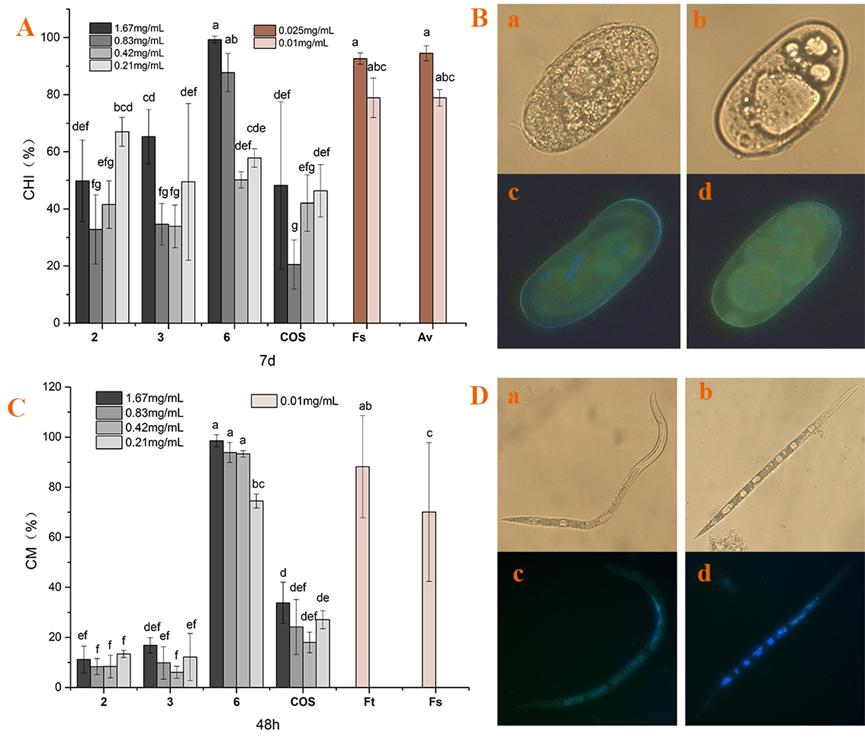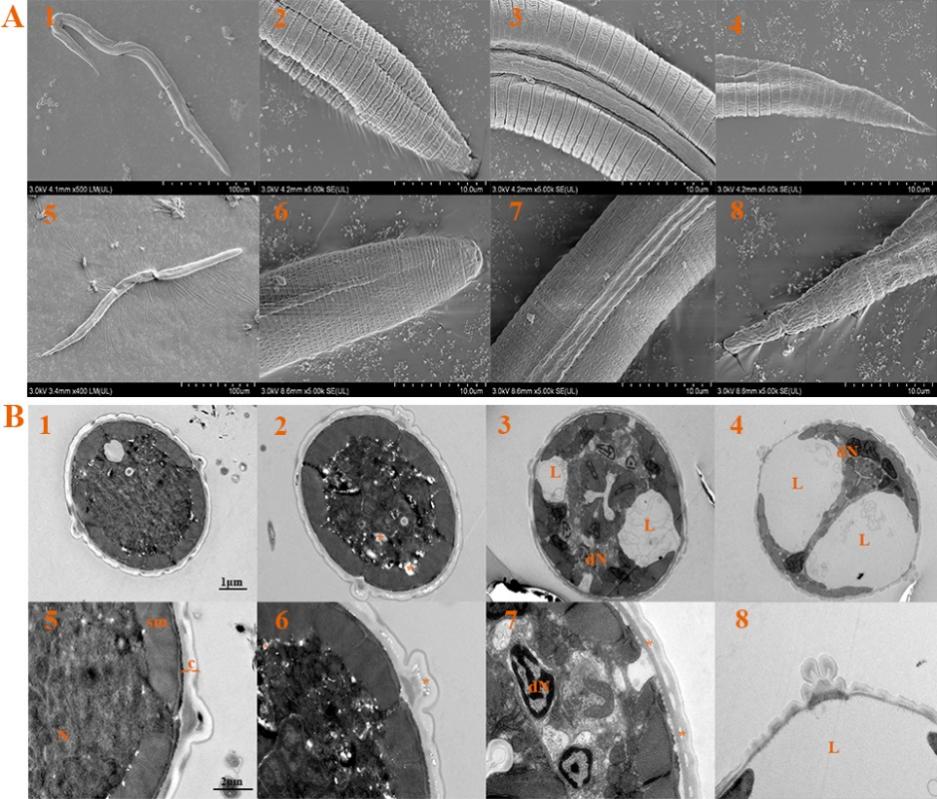Scientists Find Fluoroalkenyl Chitosan Oligosaccharide Derivative for Controlling Nematode Meloidogyne Incognita
Plant-parasitic nematode is one of the global pathogens affecting agricultural production and causing great economic losses annually. However, many chemical nematicides have been banned or restricted due to safety or environmental problems. It is urgent to develop novel and eco-friendly alternatives.
Recently, Dr. FAN Zhaoqian of Prof. LI Pengcheng's team from the Institute of Oceanology of the Chinese Academy of Sciences produced a nematicide lead compound based on chitosan oligosaccharide (COS).
The study was published in International Journal of Molecular Sciences.
Researchers presented that modification is one feasible approach to improve COS nematicidal activity. Based on this, 6-O-(trifluorobutenyl-oxadiazol)-chitosan oligosaccharide derivative was synthesized and characterized by Fourier transform infrared (FTIR), nuclear magnetic resonance (NMR), and thermal gravity analysis and differential thermal gravity (TG/DTG). Its bioactivity and action mode against root-knot nematode Meloidogyne incognita were estimated.
Results show that the derivative show high nematicidal activity against second-stage juvenile (J2) and egg hatching inhibitory activity. The derivative may affect nematode reactive oxygen species (ROS) metabolism and further damage intestinal tissue to kill nematodes. Meanwhile, by synergism with improving crop resistance, the derivative performed high control effect on the nematode with low phytotoxicity.
"Our findings suggested that chitosan oligosaccharide derivatives bearing fluoroalkenyl nematicidal groups are promising green nematicides," said Dr. FAN Zhaoqian, first author of the study.
"The fluoroalkenyl chitosan oligosaccharide derivative possesses multiple modes of action and environmental sustainability; it offers the possibility for use in integrated pest management. This discovery provides a new template for green nematicide exploration base marine biomacromolecules," said Prof. LI.
This research was funded by the National Natural Science Foundation of China and Shandong Provincial Natural Science Foundation.

Fig. 1 Effects of COS derivatives on eggs and J2s: A was egg hatching inhibitory activity at 7 d; C was nematicidal activity at 48 h; 'B' or 'D' was the morphology of egg and J2 under stereomicroscope and fluorescence microscope.

Fig. 2 Scanning electron microscopy (A) and transmission electron microscopy (B) micrographs of the cuticle of Meloidogyne incognita juveniles
Fan Z., Qin Y., Liu S., Xing R., Yu H., Li K., Li P.* (2022). Fluoroalkenyl-Grafted Chitosan Oligosaccharide Derivative: An Exploration for Control Nematode Meloidogyne Incognita. International Journal of Molecular Sciences, 23(4): 2080.
FAN Zhaoqian
Institute of Oceanology
E-mail: fanzhaoqian@qdio.ac.cn
(Editor: ZHANG Yiyi)